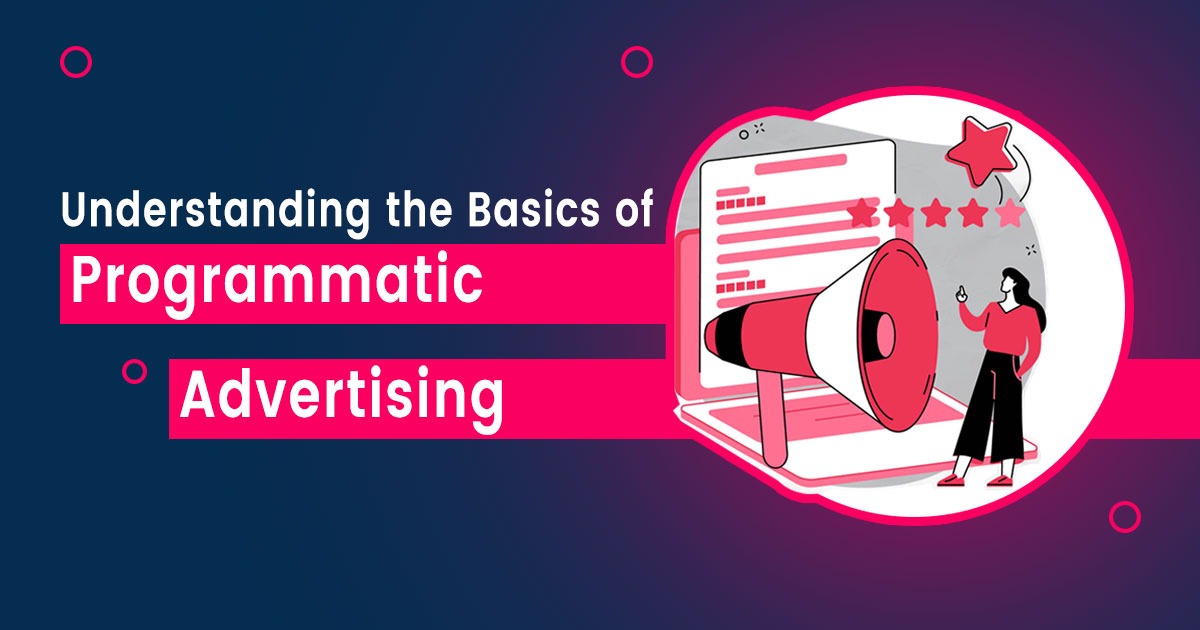Understanding The Basics Of Programmatic Advertising
|
Getting your Trinity Audio player ready...
|
Understanding The Basics Of Programmatic Advertising
In today’s fast-paced digital landscape, marketers and advertisers are constantly seeking more efficient ways to reach their target audiences. More sophisticated, automated systems are replacing the traditional methods of media buying, where humans negotiate ad placements. Enter programmatic advertising, a method that has revolutionized the advertising world by automating the buying and selling of online ad space. Understanding the basics of programmatic advertising is crucial for anyone involved in digital marketing.
What Is Programmatic Advertising?
Programmatic advertising refers to the automated buying and selling of digital ad space. Unlike traditional ad buying, which involves negotiations between humans, programmatic advertising leverages artificial intelligence (AI) and real-time bidding (RTB) to make the process faster, more efficient, and more targeted. Essentially, it’s a way for advertisers to buy digital ad space in real-time, across various platforms and websites, using algorithms that optimize for the best placements and pricing.
Programmatic advertising includes a wide range of ad formats, including display ads, video ads, mobile ads, and even connected TV (CTV) ads. Advertisers can reach specific audiences and show their ads to the right people at the right time based on data-driven decisions using this method.
How Does Programmatic Advertising Work?
The process of programmatic advertising can be broken down into several key components:
- Demand-Side Platforms (DSPs): These are the platforms that advertisers use to buy ad space programmatically. A DSP allows advertisers to bid on ad impressions across a range of publishers’ websites. Advertisers can set their parameters, such as target audience, budget, and bid amount, and the DSP will automatically place bids on their behalf.
- Supply-Side Platforms (SSPs): Publishers use these platforms to sell their ad inventory programmatically. . An SSP connects to multiple ad exchanges, allowing publishers to offer their ad space to a wide range of potential buyers in real-time.
- Ad Exchanges: These are digital marketplaces where SSPs and DSPs connect to facilitate the buying and selling of ad space. Ad exchanges are where the actual bidding takes place, with multiple advertisers bidding for available ad impressions.
- Real-Time Bidding (RTB): This is the auction process that happens in real-time, usually within milliseconds. An ad exchange auctions off an ad impression when a user visits a website. . DSPs place bids on behalf of advertisers, and the highest bidder wins the ad placement.
- Data Management Platforms (DMPs): These platforms collect and analyze data from various sources to help advertisers make informed decisions about their targeting strategies. DMPs can use first-party data (collected directly from a company’s own audience) and third-party data (collected from external sources) to create detailed audience segments.
- Targeting: One of the main benefits of programmatic advertising is its ability to target specific audiences with precision. Advertisers can target users based on demographics, interests, behavior, location, and even time of day. This level of granularity ensures that ads are shown to the most relevant audience, increasing the likelihood of engagement.

Types of Programmatic Advertising
There are several different types of programmatic advertising, each with its own unique approach:
- Open Auctions: Also known as the open marketplace, this is the most common form of programmatic advertising.In real-time auctions, ad inventory is bought and sold to the highest bidders. It’s open to all advertisers, which can drive prices down due to high competition.
- Private Marketplaces (PMPs): These are invitation-only auctions where premium publishers offer their inventory to a select group of advertisers. PMPs offer more control and transparency to both publishers and advertisers, often leading to higher quality placements and reduced risk of ad fraud.
- Programmatic Direct: This is a method where advertisers directly buy ad inventory from publishers at a fixed price, without the need for an auction. This approach is ideal for brands that want to secure premium inventory in advance and prefer a more controlled environment.
Benefits of Programmatic Advertising
Programmatic advertising has become popular due to the numerous benefits it offers over traditional media buying methods.
- Efficiency: Programmatic advertising automates the entire process of buying and selling ad space, reducing the need for manual negotiations and paperwork.This saves time and allows for easier scaling of campaigns.
- Real-Time Optimization: With programmatic advertising, campaigns can be optimized in real-time based on performance data. Advertisers can adjust their bids, targeting, and creative elements on the fly, ensuring that their campaigns are always performing at their best.
- Precision Targeting: Programmatic advertising’s ability to target specific audiences with precision ensures that ads are only shown to users who are most likely to be interested in the product or service being advertised. This leads to higher engagement rates and a better return on investment (ROI).
- Cost-Effectiveness: The auction-based nature of programmatic advertising means that advertisers only pay what they deem an impression is worth, reducing wasted spend on ineffective placements.
- Scalability: Programmatic advertising allows for campaigns to be scaled across multiple platforms and devices with ease. Whether it’s reaching users on desktop, mobile, or connected TV, programmatic can handle it all.
- Transparency: Detailed reports and analytics show advertisers where their ads are being displayed, to whom they are being shown, and how they are performing. This level of transparency is crucial for optimizing campaigns and ensuring brand safety.
Challenges and Considerations
While programmatic advertising offers many benefits, it’s not without its challenges:
- Ad Fraud: Programmatic advertising can be susceptible to ad fraud, where malicious actors generate fake impressions or clicks to drain advertisers’ budgets. It’s important for advertisers to work with trusted partners and use fraud detection tools to mitigate this risk.
- Complexity: The programmatic ecosystem can be complex and overwhelming for those who are new to it. Navigating the various platforms, technologies, and data sources requires a certain level of expertise.
- Brand Safety: Ensuring that ads don’t appear alongside inappropriate or harmful content is a concern for many advertisers. Programmatic ads requires robust brand safety measures to protect a brand’s reputation.
With the right knowledge and tools, you can make programmatic advertising a game-changer for any digital marketing strategy. By automating the process and leveraging data-driven decision-making, programmatic allows advertisers to reach their target audiences with unprecedented efficiency and precision. However, it’s essential to understand the intricacies of the programmatic ecosystem and to approach it with a strategic mindset. With the right knowledge and tools, programmatic advertising can be a game-changer for any digital marketing strategy.

 Previous Post
Previous Post Next Post
Next Post